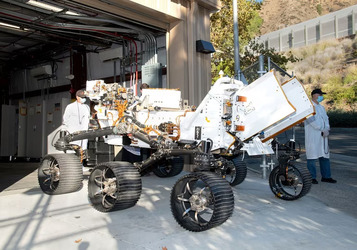The week's pick
Random Articles
Reseach Article
Study on Approaches of Noise Cancellation in GSM Communication Channel
| Communications on Applied Electronics |
| Foundation of Computer Science (FCS), NY, USA |
| Volume 3 - Number 5 |
| Year of Publication: 2015 |
| Authors: Rekha N, Fathima Jabeen |
 10.5120/cae2015651940
10.5120/cae2015651940
|
Rekha N, Fathima Jabeen . Study on Approaches of Noise Cancellation in GSM Communication Channel. Communications on Applied Electronics. 3, 5 ( November 2015), 5-11. DOI=10.5120/cae2015651940
Abstract
With the increasing base of mobile phone users globally, the need of providing quality voice calls has become one of the prominent need of the telecommunication. GSM has a wide customer base where various instances of noisy calls has been witnessed. Hence, the evolution of noise cancellation technique has come as a boon to eliminate noise from the sensitive and critical signals for the superior quality of services towards various commercial communication systems over GSM. Although there has been a bunch of research work conducted for noise cancellation, but very few are evident in the field of GSM communication system. This paper discusses the cause of noise in GSM along with various causes and effect. It also frequently adopted technique with various noise quality measuring practices. Finally, it discusses some of the prior studies witnessed to address the similar issues in the past.
References
- Vaseghi. S. V.2006. Advanced Digital Signal Processing and Noise Reduction. 3rd edition, Wiley publication
- Rossholm, A. 2006. On The Enhancement Of Audio And Video In Mobile Equipment. Blekinge Institute of Technology
- Gerald R.2002. McMenamin Forensic Linguistics: Advances in Forensic Stylistics, CRC Press, Law, pp. 360
- “Automatic gain control” (22nd Sept, 2015)http://en.wikipedia.org/wiki/Automatic_gain_control
- Joerg Bitzer and Jan Rademacher. (23nd Sept, 2015) Detection, Interpolation and Cancellation Algorithms for GSM burst Removal for Forensic Audio
- LTISystemTheory”,http://en.wikipedia.org/wiki/LTI_system_theoryKuldip Paliwal, Kamil Wo´ jcicki. 2011. Benjamin Shannon, The importance of phase in speech enhancement, ScienceDirect-Elsevier, Speech Communication, Vol. 53, pp. 465–494
- Lim, J.S, A.V., Oppen Heim. (1979). Enhancement and bandwidth Compression of Noisy Speech, Proceedings of IEEE, vo.67, No.12
- Ekaterina Verteletskaya, Boris Simak. 2011. Noise Reduction Based on Modified Spectral Subtraction Method, International Journal of Computer Science, Vol. 38
- Phil S. Whitehead, David V. Anderson, Mark A. Clements. 2003. Adaptive, Acoustic Noise Suppression For Speech Enhancement, IEEE
- Joon-Hyuk Chang, Young-Joon Kim, Nam Soo Kim. 2000. Spectral Enhancement Based On Global Soft Decision, IEEE Signal Processing Letter, Vol.7, Iss.5, Pp.108-110
- Chabane Boubakir and Daoud Berkani, Chabane Boubakir and Daoud Berkani. 2010. Journal of Computer Science 6 (7): 700-705
- Olivier CappC. 1994. Elimination of the Musical Noise Phenomenon with the Ephraim and Malah Noise Suppressor, IEEE
- Anuradha R. Fukane, Shashikant L. Sahare. 2011. Different Approaches of Spectral Subtraction method for Enhancing the Speech Signal in Noisy Environments, International Journal of Scientific & Engineering Research, Vol. 2, Issue. 5
- Guo Chen, Soo Ngee Koh, Ing Yann Soon.2003. Enhanced Itakura measure incorporating masking properties of human auditory system, Elsevier, Signal Processing, VOl. 83, pp. 1445 – 1456
- J. Bobin1, Y. Moudden, J.-L. Starck and J. Fadili.2009. Sparsity and Morphological Diversity for Hyperspectral Data Analysis, IEEE
- Understanding the Echo "Phenomenon" Causes and Solutions. (Retrieved, 22nd Oct, 2015). http://www.adaptivedigital.com/product/echo_cancel/echo_explain.htm
- Datasheet of Detect networks, 2012
- Echo Explained. (23rd Oct, 2015). https://www.itu.int/rec/T-REC-G.107
- The Impact of Environmental Noise on Customer Experience in GSM and CDMA Networks. (2012). White paper, Detect Network
- 3GPP TR 06.78: Results of the AMR Noise Suppression Selection Phase
- 3GPP TS 26.077: Minimum Performance Requirements for Noise Suppressor.
- Least mean squares filter. (23rd Oct, 2015). http://en.wikipedia.org/wiki/Least_mean_squares_filter
- Oyerinde, O.O., and Mneney, S.H.2009. Variable Step Size Algorithms for Network Echo Cancellation, UbiCC Journal, Vol.4, No.3
- Scott Pennock.2002. Accuracy of the Perceptual Evaluation of Speech Quality (PESQ) algorithm, Proc. Of MESAQIN
- Optimizing Your GSM Network Today and Tomorrow Using Drive Testing to Estimate Downlink Speech Quality, Agilent, Application Note 1325
- Methods for subjective determination of transmission quality. (23rd, Oct, 2015). http://www.itu.int/rec/T-REC-P.800-199608-I
- Subjective test methodology for evaluating speech communication systems that include noise suppression algorithm. (23rd Oct, 2015). http://www.itu.int/rec/T-REC-P.835/en
- The E-model: a computational model for use in transmission planning.(23rdOct, 2015)https://www.itu.int/rec/T-REC-G.107
- About ETSI. (23rd, Oct, 2015). http://www.etsi.org/about
- ANNEX C: Minimum Requirements for Mobile Networks and Terminals for the usage of the ‘HD voice’ logo Version 1.0, Retreived from www.gsma.com
- Enhanced Variable Rate Codec.(23rd Oct, 2015). http://en.wikipedia.org/wiki/Enhanced_Variable_Rate_CodecBitzer, Joerg, and Jan Rademacher.2003. Detection, Interpolation and Cancellation Algorithms for GSM burst Removal for Forensic Audio. Conference of the Int'l. Assoc. for Forensic Phonetics
- Ramesh, R.; Arslan, H.; Hafeez, A.; Hui, D.2009. Single Antenna Interference Cancellation for 8PSK Signals in EGPRS. Vehicular Technology Conference. VTC Spring IEEE 69th, pp.1-5,
- Meyer, R, Gerstacker, W.H, Obernosterer, F., Ruder, M.A., Schober, R.2009. Efficient receivers for GSM MUROS downlink transmission. Personal, Indoor and Mobile Radio Communications, IEEE 20th International Symposium, pp.2399-2403
- Bhalani, J., Trivedi, A.I., Kosta, Y.P.2009. Performance comparison of non-linear and adaptive equalization algorithms for wireless digital communication. Internet, 2AH-ICI First Asian Himalayas International Conference, pp.1-5
- Jifeng Qin; Rong Guo; Jinseok Park; Huang, A.2009.A low noise, high efficiency two stage envelope modulator structure for EDGE polar modulation," Circuits and Systems, IEEE International Symposium, pp.1089-1092
- Penttinen, J.T.J.; Calabrese, F.; Niemela, K.; Valerdi, D.; Molina, M.P.2010.Performance Model for Orthogonal Sub Channel in Noise-Limited Environment," Wireless and Mobile Communications (ICWMC), 6th International Conference, pp.56-61
- Hsiao-Bin Liang; Dau-Chyrh Chang; Guo-Hsiang Lo; Chin-Wen Chang.2011. The effect and solution of EMI caused by 217 Hz TDMA switching from compact size GSM security system. Electromagnetics, Applications and Student Innovation (iWEM), IEEE International Workshop, pp.186-190
- Roshahliza M. Ramli, Ali O. Abid Noor, and Salina Abdul Samad. 2012. A Review of Adaptive Line Enhancers for Noise Cancellation”, Australian Journal of Basic and Applied Sciences, Vol.6 (6), pp. 337-352
- Ali O. Abid Noor, Salina Abdul Samad and Aini Hussain.2012. Development of a Voice Activity Controlled Noise Canceller. Open Access sensors, pp. 6727-6745
Index Terms
Keywords

